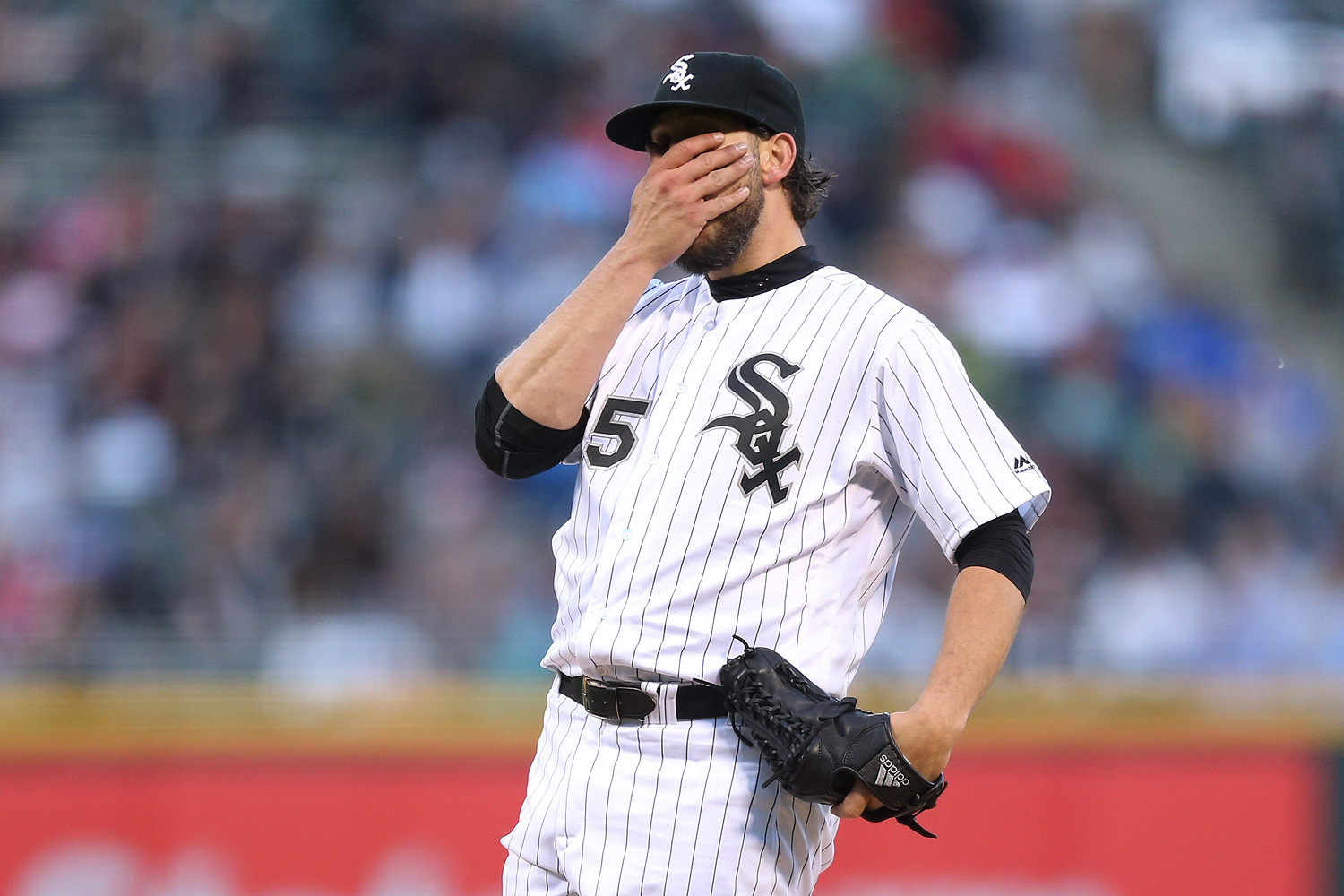It wasn't long ago that James Shields was not, seemingly, the worst starter in baseball, as he's looked in his last four starts, in which he's given up 31 earned runs, walking 13 and striking out six in 10.4 innings. It wasn't even that long ago that Shields looked like more than a respectable fourth starter—last winter, he was talked about as being near the top tier of free-agent pitchers, in the realm of Max Scherzer and Jon Lester, if considerably far from them. Yahoo Sports columnist Jeff Passan argued that Shields could have done better than his four-year, $75 million deal with the Padres, pushing it up over $80 million over the same timeframe.
Earlier this month, the Padres ate tens of millions of dollars on that contract, getting just a modest return from the White Sox. And it's starting to look like the Padres got the better end of the deal.
What happened? At Fangraphs, Jeff Sullivan points out that Shields's velocity fell across the board beginning in June of last year. He's not the first person to notice; Eno Sarris noted that Shields's velocity fell 2.9 miles an hour from April 2015 to April 2016, the fifth biggest decline in baseball.
That hurts, but aging pitchers can sometimes use guile when they lose speed. That's not happening with Shields. "Why would the lowest velocity and lowest swinging strike rate and the lowest strikeout rate of his career lead to some of the best recent results?" Sarris wrote.
One reason pitchers fall off is that they start pitching badly. The other is that batters figure out something about a pitcher. Perhaps, for example, that they are pitching badly. And perhaps something like that has happened with Shields.
For example, here's how often hitters swung at his pitches, depending on the location, in 2015 (via Fangraphs).
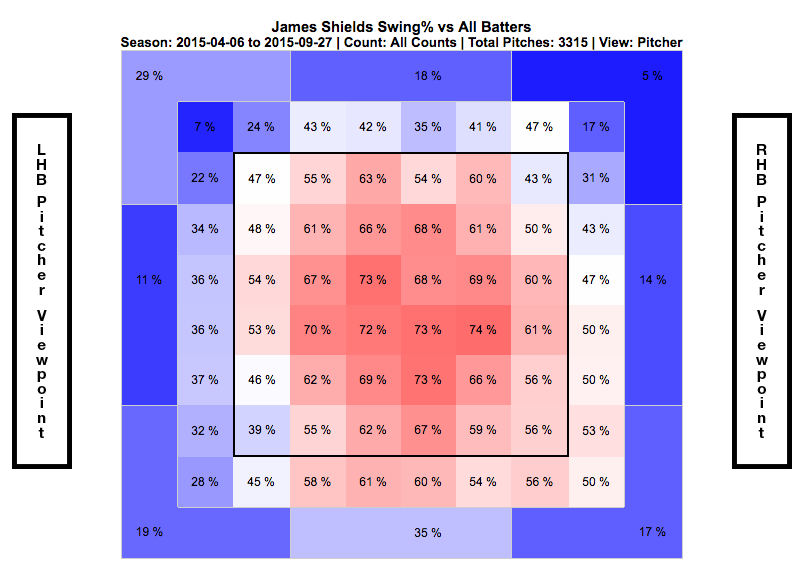
And his first ten starts of 2016, excluding his disastrous last Padres start and his White Sox starts:
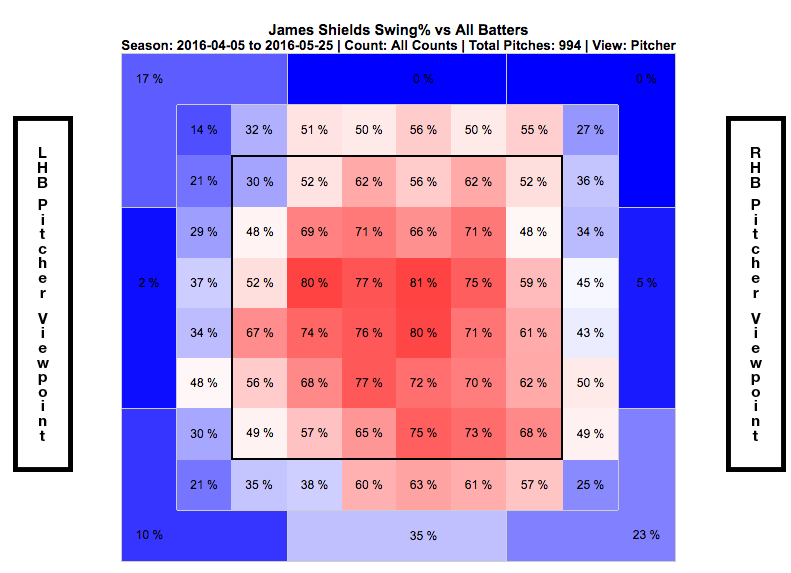
Now, his dreadful most recent four starts:
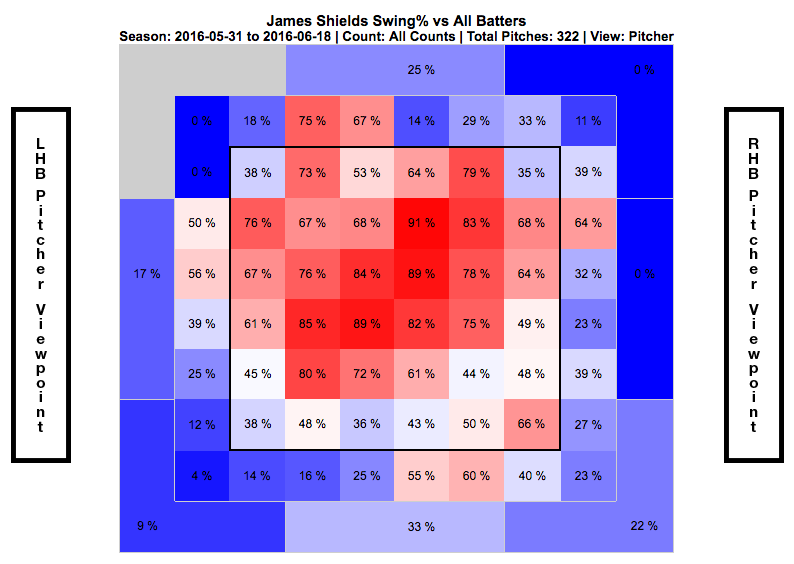
For whatever reason, opponents have been able to lay off Shields's borderline pitches and tee off on his balls in the zone. They weren't chasing as much in his first nine starts of 2016, and they haven't chased at all in his last four starts—even laying off strikes low in the zone—and are just laying back and killing his mistakes.
Here's another way of looking at it. In 2016, Shields has the 11th-lowest swing rate on balls outside the zone in baseball, and his company is not great. On pitches in the zone, he has the highest swing rate in baseball. He's not fooling anyone.
Another way of looking at how Shields isn't fooling anyone: how his pitch usage has changed versus what hitters are doing to his pitches. Here's his pitch usage, via Brooks Baseball:
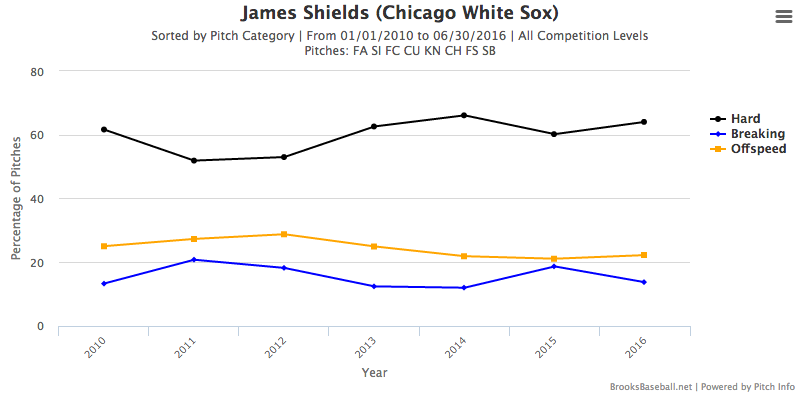
And opponents' slugging against those pitches. His fastball use is up; his velocity is down.
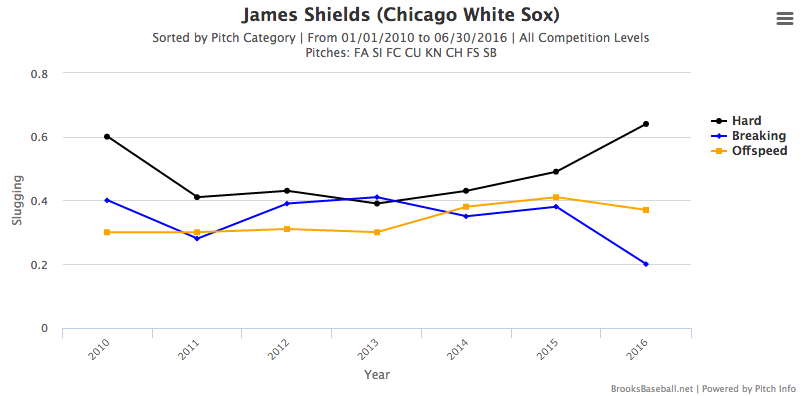
(It's worth noting that 2010 was also a bad year for Shields; he finished with a 5.18 ERA.)
The Sox knew what they were getting after Shields' 11 starts with the Padres this year. Shields is probably not this bad, and the Sox don't need him to be great—just better than Mat Latos, which is to say, a good fourth starter. That was the goal at the discount price they got Shields for, and it's still not out of reach. But it's receding faster with each horrible start.



